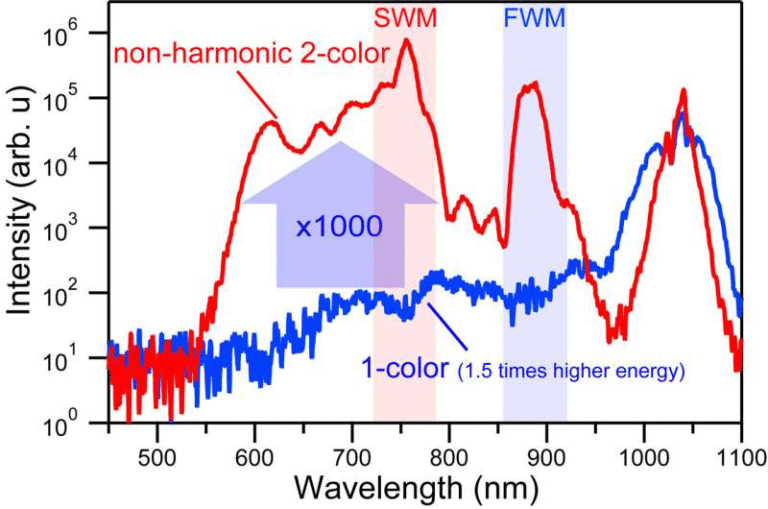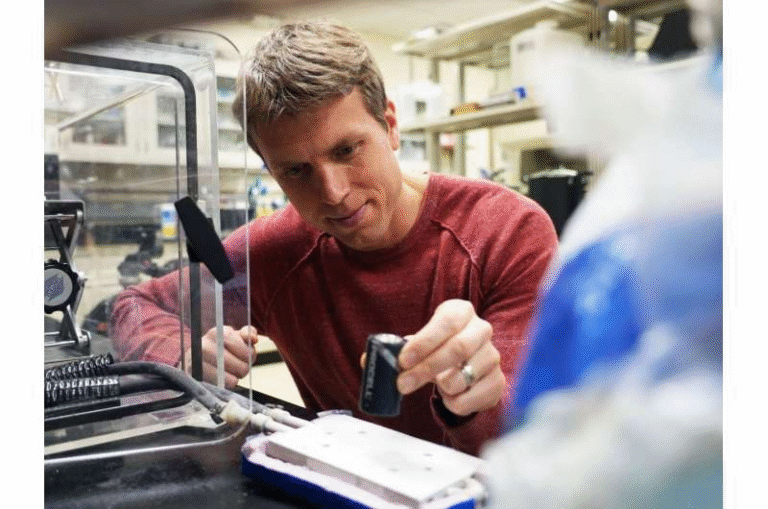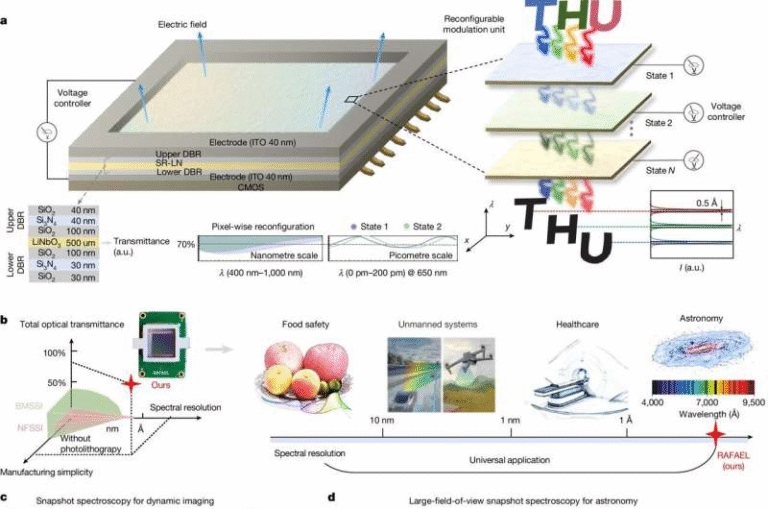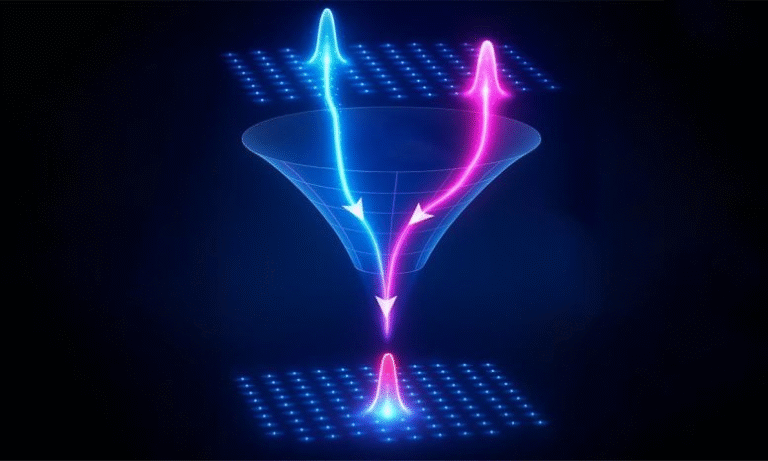Caltech Breaks Record With a 6,100-Qubit Quantum Array – A Big Step Toward Scalable Quantum Computing

Physicists at the California Institute of Technology (Caltech) have officially built the largest quantum computing array ever created, featuring 6,100 neutral-atom qubits arranged and controlled using advanced laser systems. The research, published in Nature, showcases a leap in scalability, precision, and stability for neutral-atom quantum platforms—three qualities that are essential if quantum computers are ever to surpass today’s classical machines.
What Exactly Happened
The Caltech team, led by Professor Manuel Endres, used optical tweezers—tightly focused beams of laser light—to trap individual cesium atoms inside an ultra-high vacuum chamber. These trapped atoms serve as qubits, the quantum equivalent of bits in a traditional computer.
Each qubit can exist as both 0 and 1 at once through the principle of superposition, allowing quantum systems to handle certain problems far faster than even the most powerful supercomputers. But these systems are incredibly fragile; even small disturbances can cause errors.
To make quantum computers reliable, scientists must add extra qubits that detect and correct errors. That means a practical quantum computer may require hundreds of thousands of qubits to perform useful computations. This is where Caltech’s achievement stands out—it’s a massive leap in scale and stability that moves us closer to error-corrected, fault-tolerant machines.
The Scale of the Achievement
Previously, most neutral-atom systems managed a few hundred qubits at best. Caltech’s new setup contains 6,100 individual qubits, all coherently controlled in a grid of laser traps.
To create this array, the researchers split a single laser beam into 12,000 tweezers, which together captured 6,100 cesium atoms. Each atom appears as a pinpoint of light when viewed through the experiment’s imaging system. It’s not just a large number—it’s a level of precision and uniformity that’s rare in quantum systems.
What’s especially remarkable is that this massive scale didn’t degrade quality. The team demonstrated that even with thousands of atoms in the array, coherence and control remained exceptionally high.
How They Did It
The process relies on laser cooling and trapping. Here’s a breakdown of the technique:
- Laser Cooling: Cesium atoms are first cooled using intersecting laser beams until they’re nearly motionless.
- Optical Tweezers: Focused laser beams act like “light traps” that hold each atom in place.
- Array Formation: The tweezers are projected into a vacuum chamber in a 2D grid, creating potential wells where atoms settle.
- Imaging and Control: High-resolution cameras monitor each qubit, while precision lasers manipulate their quantum states.
Through this system, the researchers can control each qubit individually, putting them into superposition or moving them around without destroying their delicate quantum state.
Key Technical Details
The paper presents several impressive benchmarks that highlight how advanced this system is.
| Property | Value | Significance |
|---|---|---|
| Number of qubits | 6,100 | Largest neutral-atom array ever built |
| Total tweezers | 12,000 | Used to form the trapping grid |
| Average occupancy | ~51% | Roughly half the traps filled with atoms per run |
| Coherence time | ~13 seconds | About 10× longer than previous neutral-atom arrays |
| Single-qubit gate fidelity | 99.98% | Extremely high control accuracy |
| Atom motion fidelity | 99.95% | Atoms can be moved without losing superposition |
| Imaging fidelity | >99.99% | Each atom can be detected with near-perfect reliability |
| Atom lifetime | ~23 minutes | Stable enough for long experimental sequences |
Each of these metrics matters. Coherence time measures how long a qubit can stay in superposition before it decoheres (loses information). Longer times allow more operations to be performed reliably. Similarly, gate fidelity measures how accurately the system can manipulate qubits.
The team achieved these results while maintaining an ultra-high vacuum environment and operating at room temperature, not in a cryogenic chamber—a notable feat since many competing quantum systems require near-absolute-zero conditions.
Why Neutral-Atom Qubits Are Exciting
Neutral-atom quantum computing is one of several competing platforms alongside superconducting circuits (used by Google and IBM) and trapped ions (used by IonQ and Honeywell). What makes the neutral-atom approach compelling is its natural scalability.
Each atom is identical by nature and can be trapped in a grid with optical tweezers, allowing potentially tens or hundreds of thousands of qubits to be arranged. Because they’re neutral, these atoms interact weakly when not entangled, which reduces interference and error rates.
Additionally, neutral-atom systems allow for reconfigurable architectures. The atoms can be moved around to create dynamic connections—an advantage for implementing quantum error correction and other complex algorithms.
Moving Qubits Without Breaking Them
One of the most challenging parts of quantum hardware design is moving qubits around while keeping their quantum state intact.
The Caltech team demonstrated that they could transport cesium atoms hundreds of micrometers across the array while keeping them coherent. This is essential for building large, modular quantum systems where qubits must be rearranged for error correction or interaction.
To put it simply: they managed to “carry” a fragile quantum state from one point to another without spilling it—like running with a glass of water without letting a drop fall.
The Path Toward Error Correction
The next frontier for quantum computing is error correction—a system of encoding quantum information so that it can survive occasional qubit errors.
Unlike classical computers, quantum states can’t be copied due to the no-cloning theorem. Instead, multiple physical qubits are combined to represent a single logical qubit, with clever mathematical schemes that detect and correct errors without directly measuring the quantum information.
Caltech’s 6,100-qubit array is an essential step toward this. With such a large pool of qubits and strong control over each one, researchers can start implementing error correction codes on a scale never before possible.
The team plans to next explore entanglement—linking qubits so that changes to one affect the others instantly. Entanglement is the real engine of quantum computation, allowing systems to simulate physical processes and solve problems in chemistry, materials science, and even cosmology.
Limitations and Next Steps
While this is a huge milestone, the Caltech system isn’t yet a working quantum computer in the full sense.
- No large-scale entanglement yet: The experiment focuses on trapping and coherence, not on performing two-qubit entangling gates across the array.
- Partial occupancy: Only about half of the possible trap sites contain atoms, which affects how large a logical system can be built.
- Still physical qubits: The system hasn’t yet been used to construct logical qubits through error correction.
- Atom loss: Even with long trapping times, some atoms are lost during operation, which will need further improvement.
Despite these limits, this platform provides a blueprint for scalable systems. It demonstrates that a neutral-atom array can reach industrial-scale qubit counts while maintaining coherence and control—something once thought impractical.
Why This Matters for the Future of Computing
If we zoom out, this is part of the global race to build a functional quantum computer. Different approaches—superconducting, trapped ions, photonics, and neutral atoms—are all vying for dominance.
Neutral-atom systems like Caltech’s offer a path to massive scalability, a key requirement for the future. When combined with long coherence times and movable qubits, they open the door to modular quantum architectures capable of performing complex computations and simulations.
Practical quantum computers could revolutionize:
- Chemistry: Simulating molecular interactions at the quantum level for new drugs and materials.
- Physics: Modeling quantum phenomena and condensed matter systems that are impossible to compute classically.
- Optimization: Solving logistics, cryptography, and machine learning problems faster than traditional computers.
- Fundamental science: Understanding quantum field interactions and even aspects of spacetime behavior.
Caltech’s work brings that vision closer. The next steps—entangling large groups of atoms and implementing error-corrected logic—could make neutral-atom systems the leading platform for next-generation quantum computation.
How This Compares to Other Platforms
To appreciate this milestone, it’s worth comparing neutral-atom technology to other major quantum systems.
- Superconducting qubits (Google, IBM): These are fast and already integrated into chip-based systems but are limited by coherence times of only microseconds. Scaling them up requires complex wiring and cryogenic cooling.
- Trapped ions (IonQ, Honeywell): They have excellent coherence times and high-fidelity gates but are slower and difficult to scale beyond a few hundred qubits.
- Photonic qubits: They operate at room temperature and are easily transmitted, but interacting photons reliably for computation is still a major challenge.
- Neutral atoms (Caltech, QuEra, PASQAL): Offer natural scalability, long coherence, and dynamic connectivity—all while operating at room temperature.
This combination gives neutral-atom platforms a strong position for future breakthroughs, especially as techniques for entanglement and error correction improve.
Funding and Collaboration
This work was supported by several major scientific organizations, including the Gordon and Betty Moore Foundation, Weston Havens Foundation, National Science Foundation, Army Research Office, U.S. Department of Energy’s Quantum Systems Accelerator, DARPA, Air Force Office of Scientific Research, the Heising-Simons Foundation, and AWS Quantum Postdoctoral Fellowship.
Such wide-ranging support underscores the importance of quantum technology for both scientific discovery and future computing infrastructure.
Final Thoughts
Caltech’s 6,100-qubit array is a clear sign that quantum computing is maturing beyond small-scale experiments. By demonstrating that scale, stability, and precision can coexist in a single platform, this achievement redefines what’s possible in the field.
While it’s still early days for practical applications, this record-setting experiment shows that the building blocks of error-corrected, large-scale quantum computers are finally taking shape.
Research Reference:
A tweezer array with 6100 highly coherent atomic qubits – Nature (2025)





